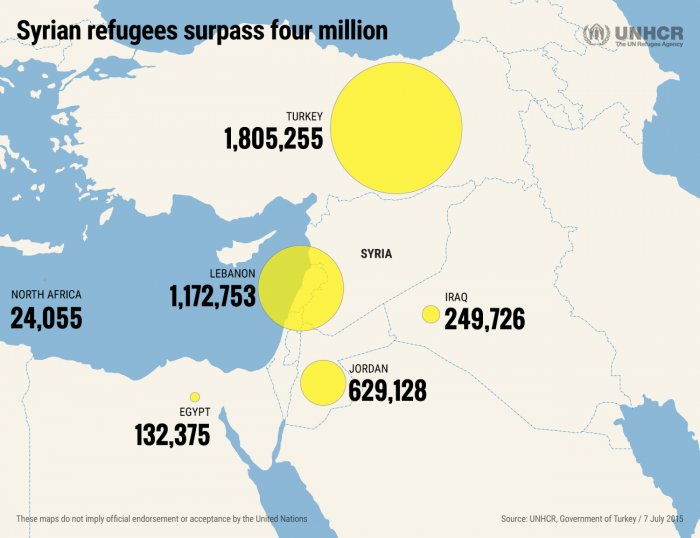Syria’s Millions: People and Dollars

A little more than a year ago, I wrote a blog called “Breaking Down the Status of Syria.” One heartbreaking statistic I noted in that blog was that at the time, every 60 seconds, one family flees Syria. During the last week, Syria reached another sad milestone asthe number of refugees out of the country passed four million.

Of that four million:
- 1.8 million are in Turkey
- 1.1 million are in Lebanon
- 629,000 are in Jordan
- Thousands of others are elsewhere, in Iraq, Egypt, Afghanistan, Europe and Africa
- There are dozens of informal camps with unregistered refugees
- 51.1 percent of refugees are under the age of 18
Conflict in Syria is now in its fifth year and has spilled over its borders, boosting the human trafficking trade through Africa and the Mediterranean. More than 220,000 have died. In addition to the four million refugees, there are an estimated 12.2 million within Syria’s borders who need humanitarian assistance, and 7.6 million who have been displaced from their homes within the country itself. It is difficult to gauge the true funding picture at times, as the work and funds raised by many international nongovernmental organizations is not reflected in the United Nations’ data for this crisis. The UN’s appeal for 2015 efforts in Syria and for Syrian refugees in other countries totals $1.3 BILLION. Only 33 percent of that appeal has been funded, leaving a $904 million gap in relief and aid.
The security studies graduate in me could write many, many blogs on the foreign policy, political, and national security implications of ignoring Syria. The truth is that until a political or military solution is reached, the humanitarian crisis will go on.
Setting aside those things, however, the humanitarian in me wonders how the world has chosen to ignore Syria. Massive, event-triggered disasters like the earthquake in Nepal reap millions in reactionary funding. While the needs in Nepal are great, the needs in Syria also continue to grow: safe water becomes harder to obtain with each passing day, millions are considered food insecure, and given the numbers displaced, it goes without saying that resettlement is a significant challenge, not just in Syria, but in every country its’ refugees have fled to. And yet, those needs are often lost in the shuffle as organizations plan their philanthropic funding each year.
The Syria crisis should matter to donors at all levels. It is a crisis that spills across the borders of numerous nations. It is the definitive moral crisis of this decade. It carries with it numerous security and economic concerns. Private philanthropy has a great opportunity to fill many of the gaps that exist in the Syrian crisis. It is possible for private donors to leverage extremely effective gains in this crisis through coordinated, collaborative giving. Those gains are not made in blanket giving to large standard organizations, but through a clear understanding of the needs on the ground.
The Syria crisis has become this thing that bothers me in my very core – our ability as humans to ignore the intense suffering of other humans, simply because it is not in front of us. Sometimes, it keeps me up at night, knowing that it is my generation who continues to choose to turn away.
More like this
Breaking Down the Status of Syria
